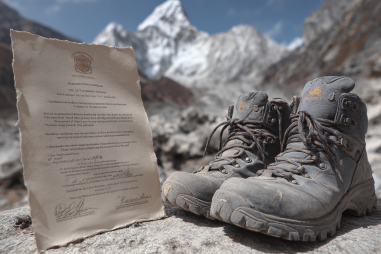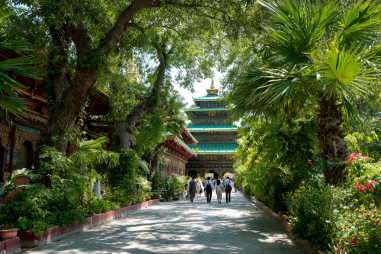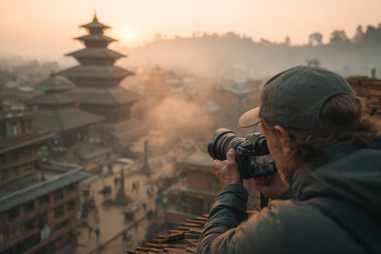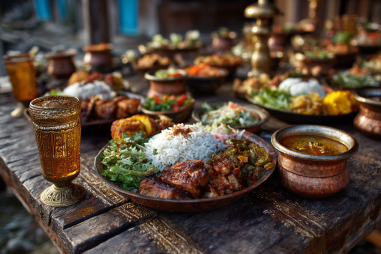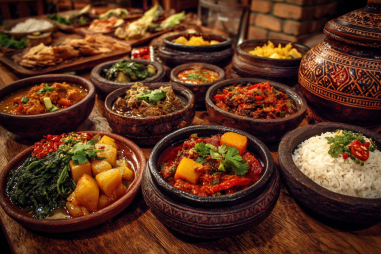Nestled high in the Annapurna region of Nepal, Jomsom is a captivating Himalayan town known as the gateway to the remote Mustang area. Surrounded by breathtaking landscapes, towering peaks, and winding rivers, Jomsom offers adventurers, trekkers, and culture enthusiasts a unique blend of natural beauty and rich Tibetan-influenced culture. Whether you’re arriving by plane, road, or trekking through scenic trails, this vibrant town serves as a perfect starting point for journeys deeper into Mustang and the greater Himalayas. This travel guide unravels everything you need to know about reaching Jomsom, the best time to visit, local attractions, accommodation options, cultural events, safety tips, and suggested itineraries, ensuring your trip is both seamless and memorable.
How to Get to Jomsom: Air, Road, and Trekking
Reaching Jomsom is an adventure in itself. There are several modes of transportation depending on your budget, time, and preference for the journey.
By Air
The quickest and most popular way to get to Jomsom is via a short domestic flight from Pokhara, a bustling city and tourism hub in Nepal. Flights operate daily, weather permitting, and take approximately 20–30 minutes. The flight path offers spectacular views of the Annapurna and Dhaulagiri mountain ranges. However, due to the town’s mountainous location, these flights are often vulnerable to delays and cancellations because of weather conditions, especially in the monsoon season.
By Road
For those who prefer ground travel, Jomsom is accessible by jeep or bus from Pokhara via the rough road that follows the Kali Gandaki River valley. The journey usually takes 6–8 hours. While the road can be dusty and bumpy, it presents an excellent opportunity to experience rural life and scenic vistas. Jeep rides are faster but less comfortable, while buses are slower but provide a more economical option.
By Trekking
Jomsom is also a common destination for trekkers venturing along the Annapurna Circuit or the Annapurna Mustang trail. Trekking to Jomsom, whether starting from Tatopani or Marpha, allows travelers to immerse themselves in stunning mountain landscapes, traditional villages, and vibrant local culture. The trek times vary but usually require 4 to 7 days depending on the route and pace.
Best Time to Visit Jomsom
Choosing the right time to visit Jomsom can significantly enhance your experience. The best weather occurs in the pre-monsoon spring months from March to May and the post-monsoon autumn months from late September to November. During these times, skies are typically clear, offering uninterrupted views of the mountains and pleasant temperatures for trekking and exploration.
The monsoon season, from June to early September, is generally avoided due to heavy rainfall, which can cause landslides and muddy trails. The winter months from December to February bring cold temperatures and occasional snowfall, which might be challenging for some travelers but rewarding for those seeking solitude and snowy vistas.
Local Attractions and Cultural Spots
Though small, Jomsom boasts a variety of attractions that showcase both natural beauty and cultural richness.
- Kali Gandaki River: This river cuts through the valley offering dramatic gorge views. It’s a popular spot for photography and the launching point for rafting adventures.
- Jomsom Bazaar: The central marketplace is alive with colorful shops, Tibetan handicrafts, and glimpses of local life. It’s a great place to pick up souvenirs and taste local snacks.
- Thini Village: A short walk from Jomsom, this village is home to the historic Thini Gompa, a small Buddhist monastery with beautiful murals and peaceful surroundings.
- Windy Pass (Jharkot): Just outside Jomsom town, it offers panoramic views of the valley and popular trekking start points.
- Marpha Village: Located along the road to Jomsom, it’s famous for its apple orchards, traditional architecture, and the charming Marpha Monastery.
Accommodation and Dining in Jomsom
The town caters well to travelers with a range of accommodation options, from budget guesthouses and teahouses to mid-range hotels. Popular choices include community-run lodges and cozy inns that prioritize sustainable tourism and offer warm hospitality.
Dining options in Jomsom are largely oriented to trekkers and visitors. You’ll find numerous eateries serving hearty Nepali meals like dal bhat (lentil soup with rice and vegetables), momos (Tibetan-style dumplings), and traditional Tibetan dishes such as thukpa (noodle soup). Several restaurants also offer continental breakfasts, fresh juices, and even occasional pizza or western-style foods, catering to diverse palates.
Festivals and Events
Jomsom and the Mustang region host various festivals that offer incredible insights into local culture and traditions. When possible, plan your visit to coincide with these events to witness vibrant celebrations:
- Tiji Festival: This three-day Tibetan Buddhist festival generally takes place in May and involves traditional masked dances, music, and rituals to drive away evil spirits.
- Losar – Tibetan New Year: Celebrated with great enthusiasm in Jomsom, usually in February or March, it features prayers, feasts, and performances to mark the start of the new year.
- Mha Puja: A ritual performed by the local Tibetan community to purify and empower the self, often involving sacred offerings and blessings.
Travel Tips and Safety Advice
To ensure your time in Jomsom is both safe and enjoyable, consider the following practical tips:
- Altitude Awareness: Jomsom sits at around 2,700 meters (8,860 feet) above sea level. Altitude sickness is a possibility, so take time to acclimate, stay hydrated, avoid overexertion, and consider consulting a doctor if you have pre-existing conditions.
- Weather Preparedness: Bring layered clothing as temperatures can vary widely during the day and night. Sun protection including sunglasses and sunscreen is important due to high UV exposure at altitude.
- Permits: Foreign visitors need to obtain a Mustang Restricted Area Permit (RAP) before traveling beyond Jomsom into Upper Mustang. These can be arranged in Kathmandu or Pokhara.
- Cash is King: ATMs and banks are limited. Carry sufficient cash, preferably in Nepalese Rupees, as card payments are seldom accepted.
- Respect Local Customs: Ask permission before photographing locals, dress modestly, and be mindful of cultural norms, especially within monasteries and religious sites.
Suggested Itineraries Starting from Jomsom
Jomsom serves as an excellent base for various itineraries tailored to different interests and time frames. Here are some popular route ideas:
1. Classic Jomsom to Muktinath Trek (3-4 days)
- Day 1: Jomsom to Kagbeni – Explore the ancient village on the Kali Gandaki riverbank.
- Day 2: Kagbeni to Muktinath – Visit the sacred Muktinath Temple, an important pilgrimage site for Hindus and Buddhists.
- Day 3: Return to Jomsom via Jharkot village.
2. Annapurna Circuit Extension via Jomsom (10-14 days)
- Begin trek from Besi Sahar or Besisahar, passing through diverse landscapes en route to Jomsom.
- Explore Jomsom and possibly take a flight or road transfer to Pokhara.
3. Mustang Cultural Tour (5-7 days)
- Start in Jomsom and proceed into Upper Mustang with required permits.
- Visit Lo Manthang, the walled ancient Tibetan-style city, along with monasteries, caves, and archaic villages.
Immerse Yourself in the Himalayan Gateway
Jomsom is much more than just a transit point—it’s a place where soaring mountains meet centuries-old cultures, offering a unique blend of adventure, spirituality, and natural beauty. Whether you’re flying in, driving along the Kali Gandaki valley, or trekking across rugged trails, Jomsom welcomes you with warm hospitality and unforgettable experiences. By planning your visit with the right timing, local insights, and mindful preparation, you can make the most of this remarkable Himalayan gateway and create memories that will last a lifetime.



